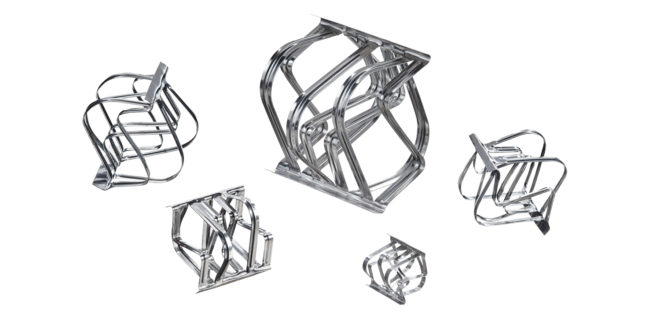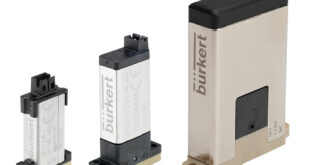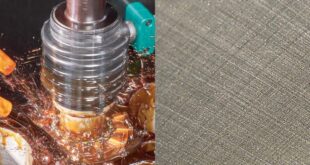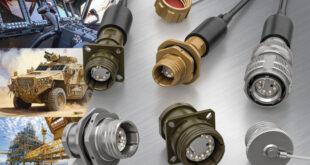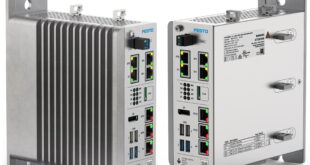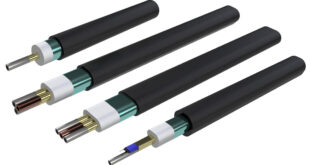Claudia von Scala looks at how the design of random packings can improve column performance and boost plant productivity
Random packings are widely used in columns for gas processing and high-pressure distillation applications.
In order to optimise the overall column performance, the design of random packings has evolved during the years.
The latest generation features high separation efficiency, low pressure drop and small tendency to fouling.
Random packings are column internals used for distillation, absorption and stripping processes in refineries, chemicals, fertilisers, petrochemical and gas processing industries.
More precisely, they are used in applications with high liquid rates, high vapour-to-liquid density ratios, low pressure drops, and that require frequent removal of column parts, eg for cleaning or system upgrade.
In order to provide optimal column performance, the design of random packings should provide a number of features.
Firstly, they should generate a large surface area that brings into contact the liquid and the vapour phases.
The packings should spread evenly within the column packing section, creating a uniform surface area distribution to provide an orientation-independent column performance.
In addition, the structure of the packings should not create a tortuous flow path for the vapour, in order to maintain a low pressure drop.
Finally, the shape should discourage nesting between packing elements and promote lower liquid flow resistance.
Combining all these considerations together and providing an optimised structure for random packings can be challenging, but the results offer improved separation efficiency inside the column.
Highly skilled suppliers/providers of random packing, such as Sulzer, can boost the efficiency and performance of columns and the entire plant by providing cutting-edge designs for random packings.
In order to ensure the quality of the products, Sulzer’s research and development engineers conduct in-house testing before their launch on the market.
Some of these tests were verified by an independent institute in the USA.
The latest innovation in random packing
The latest advance in random packing design from Sulzer is NeXRing, which provides higher capacity and efficiency compared to conventional random packing designs, as attested by in-house and third-party tests.
The performance of Sulzer’s NeXRing packings is delivered by a relatively large and accessible ring surface on which the separation process can take place, the special shape of the rings, which allows for a higher packing density and thus a larger available surface, and the open design of the rings, which reduces the pressure drop compared to conventional rings by up to 50%.
NeXRing packings distribute themselves evenly within the column packing section, while the structure of the rings provides for uniform liquid and gas flow through the column.
The shape of the packing appears fragile, but the end flanges and the reinforced ribs give the NeXRing a high mechanical strength.
Packing for CO2 absorbers
Due to their special properties, NeXRing packings are used in many industrial sectors, eg for the removal of carbon dioxide (CO2) and hydrogen sulfide (H2S) from natural gas or biogas.
For this purpose, the gas is brought into contact with amine-based solvents such as monoethanolamine (MEA), diethanolamine (DEA), methyldiethanolamine (MDEA) or MDEA / piperazine solutions (activated MDEA).
A common feature of these solvents is their strong tendency to foam, which affects the flow of the gas through the separation column.
Compared with conventional random packings, the higher open surface area in NeXRing enables the separation with less pressure drop and thereby reduces the hydraulic effect of foaming. As a result, the overall column efficiency is increased.
Methane separation
A significant increase in global coal gasification capacity is expected in the near future. This is especially true for regions like the Far East and Asia.
The actual coal gasification step is usually followed by a methane separation process.
The raw gas produced from coal consists mainly of carbon monoxide (CO), hydrogen (H2) and methane (CH4). In the methane separation column, the three constituents are separated into two streams: CO and H2, and liquid methane, which is easily transported in condensed form and sold as liquefied natural gas (LNG).
A plant in China operated a methane separation column with four different sections, designed for operation with a feed of 25% CO, 58% H2 and 17% CH4.
However, the change in the type of coal used for the gasification significantly altered the composition of the feed to the methane separation column.
In fact, the new raw gas composition was actually 25% CO, 51% H2 and 24% CH4.
In view of the increased load in the lower column sections, the capacity of the existing column was insufficient to process gas with this composition.
Sulzer retrofitted the column and replaced the existing random packings in the two lower sections with NeXRing packings.
The customer was very satisfied with the result, as the replacement increased the capacity of the entire system by 20%.
Furthermore, Sulzer spotted that the replacement of the existing liquid distributor in the lowest section could yield an even higher increase in capacity.
Treatment of acid wastewater
Sour water and sour gas are produced in oil refineries as waste products from atmospheric and vacuum columns.
Hydrogen sulphide (H2S), ammonia (NH3) and hydrogen cyanide (HCN) are typical components of sour water that must be removed before the water can be used elsewhere in the plant. This happens in so-called stripping columns.
By supplying heat in the form of steam, H2S and NH3 are removed from the sour water and withdrawn as gases from the top of the column.
An integrated power plant of a refinery in Asia was unable to meet government wastewater treatment requirements for the existing plant.
Sour water and sour gas from the upstream process were fed to the stripping column.
Particles and dust from the sour water accumulated in the packed bed and led, after a short time, to an increase in the pressure drop in the column.
The company turned to Sulzer‘s specialists for help. They recommended upgrading the random packings to NeXRing model in the two lower sections of the three-part column, where the fouling occurred. Even after half a year of operation, no increase in pressure drop could be detected.
The open design of NeXRing allows the small particles to flow through unhindered without getting stuck.
In addition, in all three column sections, the overall pressure drop in the column is lower than in the previous arrangement. The customer regularly checks the pressure drop for quality assurance in order to ensure compliance with the state’s requirements.
Optimised emission control
Governments around the world have adopted stringent regulations to reduce global air pollution from sulphur dioxide (SO2) emissions.
An Asian customer, operator of a refinery, was unable to meet the new government regulations with its existing equipment.
To reduce the SO2 content in the flue gas, a new column had to be built. Sulzer performed the calculations and developed a concept that allowed the customer to meet government regulations using Sulzer’s products and a new process arrangement.
According to this, SO2 is removed in several stages using water and alkaline solutions.
The goal was a reduction of the SO2 content in the exhaust gas below 50ppm.
By replacing the original random packings with NeXRing, it was possible to increase the efficiency. Since a certain amount of dust is to be expected during the process, the resistance of NeXRing to contamination was also an advantage.
The calculations convinced the customer, which opted for a column equipped exclusively with NeXRing packings.
The column is now successfully in operation and the SO2 content could be reduced to 35 ppm.
The total pressure drop is 40% less than required, resulting in significant energy savings over the service life of the column.
Design the column yourself
Sulzer has gained considerable experience and test data for hydraulic capacity of separation columns over many years.
Based on this know-how, Sulzer engineers have developed a design program called Sulcol that gives customers the ability to design their own columns.
Columns of different sizes can be configured with various types of internals. The Sulcol program then determines the hydraulic capacity of the system.
Columns can be configured with different types of trays, random or structured packing. Interested customers can download the latest version of Sulcol from the Sulzer website.
Claudia von Scala is Product Manager Structured and Random Packing at Sulzer.
 Engineer News Network The ultimate online news and information resource for today’s engineer
Engineer News Network The ultimate online news and information resource for today’s engineer
